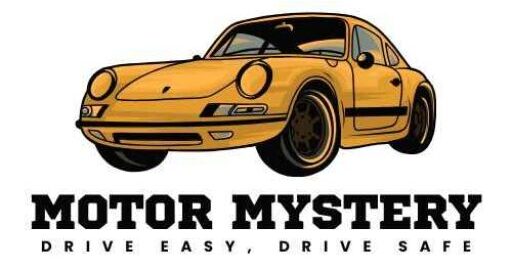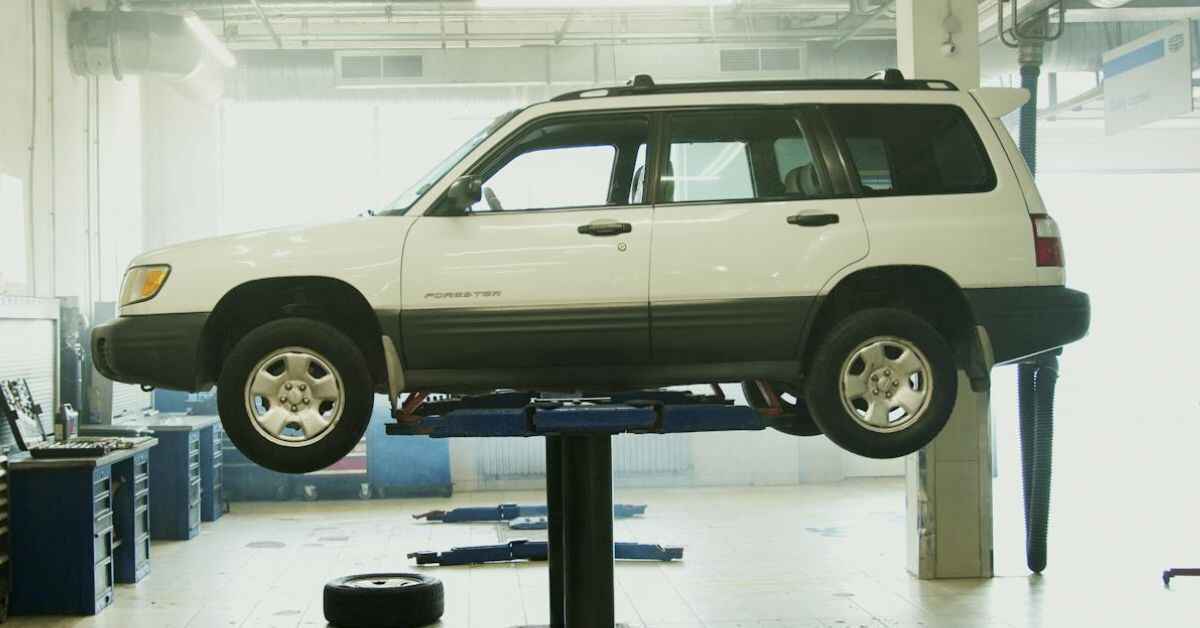Vehicle safety inspections are crucial procedures that help ensure automobiles’ roadworthiness and improve overall traffic safety. This comprehensive guide to vehicle safety inspection will explore everything you need about vehicle safety inspections, from their importance to the specific components checked and how to prepare for one.
Why Vehicle Safety Inspection Matters?
Vehicle safety inspection serves as a preventive measure to identify potential safety issues before they lead to accidents or breakdowns. As per the National Highway Traffic Safety Administration (NHTSA), approximately 12% of all vehicle crashes are due to mechanical failure. Regular safety inspections can reduce this number significantly by catching problems early.
Legal Requirements and Regulations
Most states in the U.S. require periodic safety inspections, though requirements vary by jurisdiction. Some states mandate annual inspections, while others require them only when transferring vehicle ownership or registering an out-of-state vehicle. Familiar yourself with your state’s specific requirements to ensure compliance.
Guide to Vehicle Safety Inspection: Key Components
1. Brake System
The brake system inspection is perhaps the most critical part of any vehicle safety check. Inspectors examine:
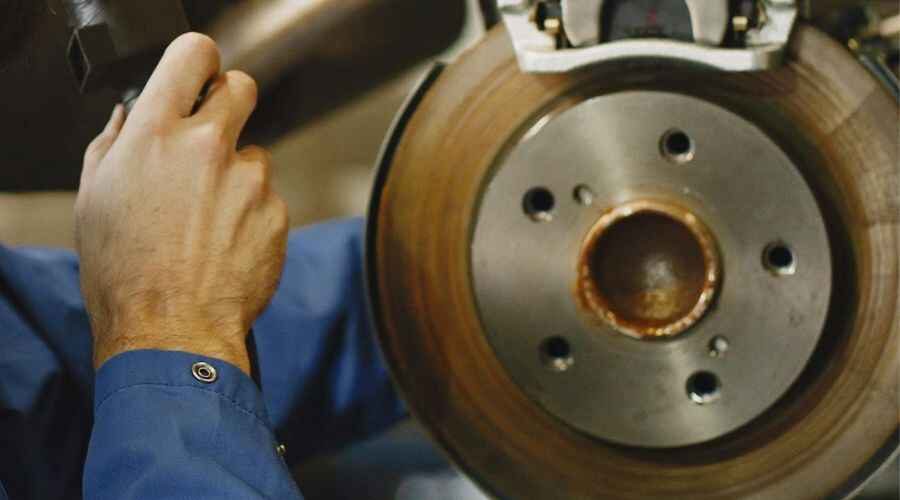
Brake pad thickness and wear patterns:
Brake pads are measured using specialized gauges to determine their remaining thickness. Most brake pads start with about 8-12mm of material and should be replaced when they reach 3-4mm. Inspectors also look for uneven wear patterns, which could indicate problems with the brake calipers, rotors, or wheel alignment. Signs of unusual wear include:
- Outer edge wear (tapered wear)
- Inner edge wear
- Uneven pad wear between left and right sides
- Crumbling or cracking of the pad material
Brake rotor condition and thickness:
During brake rotor inspection, technicians employ precision tools to evaluate multiple critical safety aspects. Using micrometers, they verify rotor thickness meets manufacturer specifications, while carefully examining the surface for scoring, grooves, and wear patterns that affect performance.
Signs of overheating like blue discoloration are assessed, as these indicate exceeded temperature limits and potential structural compromise.
Technicians use dial indicators to measure warping and runout that could cause pedal pulsation, while also checking for rust and corrosion on friction surfaces. The inspection concludes with a thorough examination of cracks or structural damage that might lead to brake failure.
Brake fluid levels and condition:
Brake fluid inspection encompasses vital checks to ensure optimal system performance and safety. Technicians verify fluid levels in the master cylinder reservoir, assess the fluid color (clear to amber is normal, while dark indicates contamination), and measure moisture content using electronic testing equipment.
The fluid’s age is checked against manufacturer recommendations for 2-3 year replacement intervals, while the master cylinder area is examined for seepage or leaks indicating seal issues. Finally, technicians confirm the correct DOT fluid type specification to prevent potential system damage and ensure safe operation.
Emergency brake functionality:
Emergency brake inspection involves a series of critical functional tests to ensure reliable operation in emergencies. Technicians measure lever or pedal travel distance against specifications and test holding ability on inclines while examining cable conditions for fraying, corrosion, or stretching.
They verify smooth release action, proper adjustment mechanism function, and warning light operation. The inspection concludes with a thorough check of all mechanical components for wear, lubrication, and freedom of movement to ensure system reliability.
Brake lines and hoses for damage:
Brake line inspection focuses on examining all fluid delivery components for safety and reliability. In vehicle safety inspection inspectors check metal brake lines for rust, corrosion, or damage. They also inspect hoses for cracks, bulges, or deterioration.
All fittings and connections are tested for security and proper torque, with careful attention. Proper line routing is verified to prevent chafing against moving parts, and rubber components are assessed for age-related deterioration. The inspection ensures all lines are adequately protected from road debris and heat exposure to maintain system integrity.
Anti-lock brake system (ABS) warning lights:
The ABS inspection involves a comprehensive series of electronic and mechanical checks to ensure proper operation. Technicians verify the ABS warning light functionality during startup, perform diagnostic scans for stored trouble codes, and test wheel speed sensors and their wiring.
The inspection includes checking the physical condition of the ABS module and hydraulic unit, verifying proper ABS pump motor operation, and testing integration with vehicle stability control systems when equipped.
A properly functioning brake system is essential for safe vehicle operation and accident prevention. Any issues found during these detailed inspections must be addressed before the vehicle can pass the safety inspection.
The brake system must meet both minimum safety standards and manufacturer specifications for proper operation. Inspectors typically measure brake pad thickness and assess whether replacement is necessary based on manufacturer specifications.
2. Steering and Suspension
The steering and suspension systems directly affect vehicle control and stability. Inspectors perform detailed examinations of:
Power steering fluid levels and condition:
Power steering inspection involves a comprehensive evaluation of the system’s fluid conditions and operational characteristics. Technicians check fluid levels both when the engine is cold and warm, analyze the fluid color for contamination (clear to light amber is normal, while dark brown/black indicates problems), and look for foaming that suggests air infiltration.
The inspection includes checking for leaks around the pump, steering gear, and hoses, verifying the correct fluid type according to manufacturer specifications, and conducting pressure tests when needed. For systems with belt-driven pumps, the belt’s tension and condition are assessed, and technicians listen for any unusual pump noises during operation that might indicate impending failure or current problems.
Steering linkage and tie rods:
A comprehensive steering linkage inspection encompasses the system’s multiple critical components and connection points. Technicians measure both inner and outer tie rod end play for excessive movement, examine tie rod boot integrity to prevent contamination, verify the secure mounting of the steering rack or gearbox, and check rack and pinion seals for any fluid leakage.
The inspection continues with assessing the steering shaft universal joint condition, evaluating center link wear (when equipped), verifying pitman arm security and wear patterns, and checking idler arm play and bushing condition. Finally, technicians verify proper torque specifications on all steering components and perform a range of motion testing to identify any binding or resistance that could affect steering performance and safety.
Ball joints and control arms:
Ball joint and control arm inspection involves a detailed assessment of the suspension system’s critical connection points and components. Technicians measure wear in upper and lower ball joints, distinguishing between load-carrying and follower joints while examining ball joint boot condition for tears that could allow contamination.
The inspection includes checking control arm bushing compression and deterioration, verifying control arm structural integrity and straightness, and ensuring proper torque on all mounting bolts.
Technicians also perform a range of motion testing, assess cross-member condition and mounting security, evaluate sway bar link condition and bushing wear, and verify the proper installation and security of castle nuts and cotter pins that prevent critical components from loosening during operation.
Shock absorbers and struts:
The inspection of shock absorbers and struts involves a thorough evaluation of the suspension system’s damping components and associated hardware. Technicians perform a bounce test to assess dampening effectiveness, visually inspect for oil leakage that would indicate internal failure and verify mount security and bushing condition. They check strut bearings for noise and smooth operation, examine strut tower condition and alignment, and assess coil spring condition and seating.
The inspection continues with an evaluation of the jounce bumper condition, checking for physical damage or corrosion throughout the assembly, testing gas charge pressure when applicable, and verifying proper MacPherson strut alignment to ensure optimal suspension performance and vehicle stability.
Wheel bearings:
Hub diagnostics involve several critical inspection points. Using a dial indicator, technicians measure hub plays while assessing bearing noise during rotation and verifying proper bearing preload.
The process includes checking the condition of integrated ABS sensor rings, examining seals for leaks, and monitoring hub assembly temperature following road tests. For serviceable bearings, grease condition must be evaluated alongside inspection of the spindle and bearing races.
The procedure concludes with confirming the correct axle nut torque and testing the electronic wheel speed sensor functionality.
Suspension bushings and mounts:
Suspension system inspection requires a comprehensive evaluation of various bushing components. The process begins with examining control arm bushings for deterioration while checking subframe mounts for proper condition and alignment. Technicians must assess strut mount bearings for free play and inspect sway bar bushings for compression issues and cracking.
The inspection continues with evaluating the trailing arm, radius arm, and tension strut bushings for wear and integrity. Additionally, motor and transmission mounts are checked, along with cross-member bushings, and if equipped, the security of torsion bar mounts is verified.
Technicians also perform dynamic tests:
- Road test for unusual noises
- Steering return to center
- Power steering effort assessment
- Suspension damping effectiveness
- Vehicle tracking straight ahead
- Body roll characteristics
- Response to steering inputs
- Brake pull evaluation related to suspension
Any excessive play in steering components or worn suspension parts can compromise vehicle handling and safety.
3. Tires and Wheels
Tire condition significantly impacts vehicle safety. During the inspection, technicians perform these detailed examinations:
Tire tread depth using a depth gauge:
Tire tread depth measurement follows specific safety and legal requirements. While most states mandate a minimum legal tread depth of 2/32 inches, passenger vehicles should consider replacement at 4/32 inches for optimal safety.
Comprehensive inspection requires measurements across multiple points including outer, center, and inner tread blocks, along with verification of built-in tread wear indicators (TWI). Winter tires demand deeper treads, with a minimum recommended depth of 6/32 inches.
Technicians must document the lowest measurements found and compare readings across all four tires while noting that commercial vehicles may be subject to additional depth requirements.
Tire wear patterns and Sidewall condition:
Different types of wear such as center wear patterns, edge wear patterns, and shoulder wear are inspected. Tire sidewalls are also checked in this inspection.
Proper tire inflation:
Tire pressure inspection must be conducted on cold tires and compared against door placard specifications, with adjustments made for specific load conditions. The process includes checking TPMS sensor functionality and a thorough valve stem assessment, which covers crack inspection, core operation, cap presence, and TPMS sensor integration.
Technicians document pressures for all tires, including the spare, while verifying matching pressures from side to side. When necessary, temperature compensation calculations are applied to ensure accurate readings.
To more about tire inflation, please read the article, “The Complete Guide to Proper Tire Inflation: Boosting Safety, Performance, and Fuel Economy”.
Wheel alignment:
Wheel alignment diagnostics encompass multiple precise angular measurements. The inspection includes measuring camber (typically within ±1 degree), caster (usually 2-5 degrees positive), and toe (approximately ±0.2 degrees), along with thrust angle, setback, and included angle calculations.
All measurements must be compared against manufacturer specifications during a comprehensive four-wheel alignment verification, which includes checking the steering wheel centerline. Technicians document all readings while assessing component adjustability and evaluating any structural damage that could impact proper alignment.
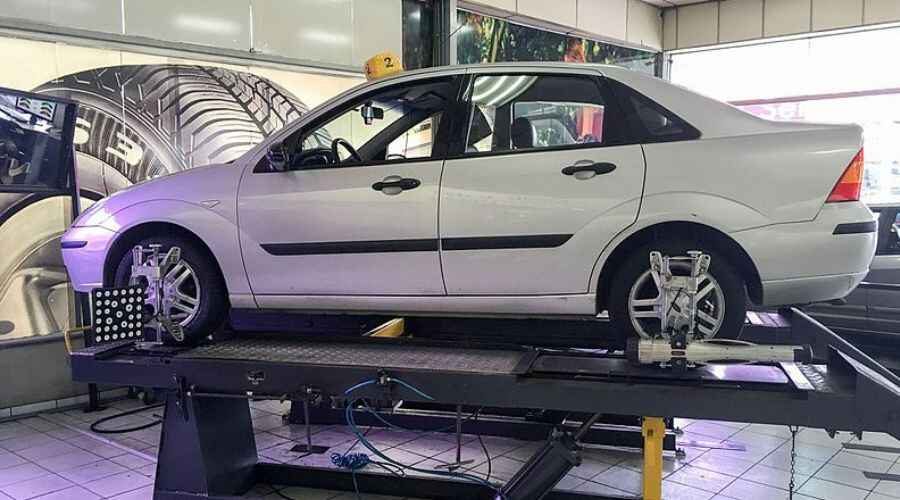
Wheel balance and condition:
Wheel balancing and mounting procedures require a comprehensive inspection process. The assessment begins with static and dynamic balance checks, ensuring the imbalance remains within the typical maximum allowance of 0.25 oz.
Wheel inspection involves examining bends, cracks, corrosion damage, proper bead seating, coating condition, and size compatibility while verifying proper offset measurements, load ratings, run-out tolerances, and any previous repairs. Lug nut installation follows manufacturer-specified torque values (80-100 ft-lbs for passenger cars, 100-140 ft-lbs for light trucks, and 200+ ft-lbs for commercial vehicles) using the correct sequence.
The process includes a thorough evaluation of lug nut condition, thread damage, corrosion, seat style, length, security devices, stud condition assessment, hub centricity verification, and wheel seat cleanliness.
The final steps involve checking torque retention and following re-torque requirements, keeping in mind the standard tread depth requirement is a minimum of 2/32 inches with 4/32 inches recommended for optimal wet-weather performance.
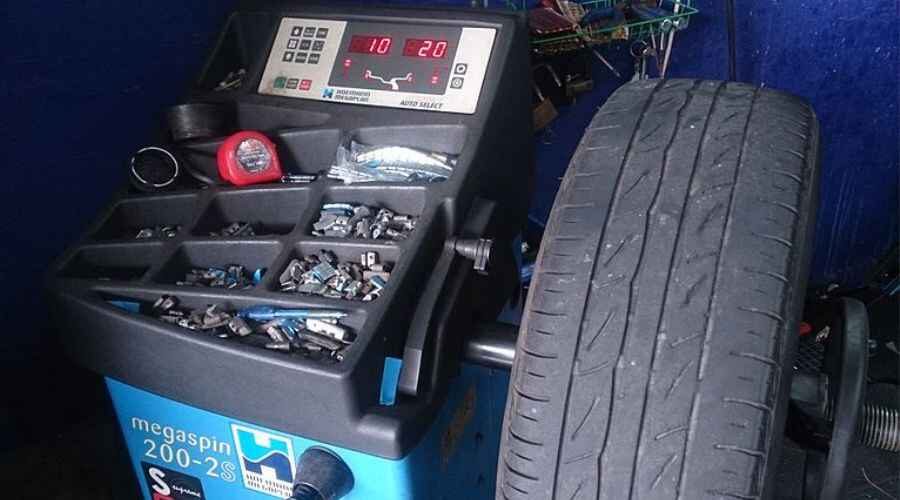
Wheel Rotation and condition:
You should rotate your car tires in a specific manner in every 5,000 to 7,500 miles. Also, you should follow your owner’s manual instructions for proper tire rotation patterns. Regular rotation helps distribute wear evenly across all four tires, maximizing their lifespan and maintaining optimal traction for safer driving. You should alternate the front and rear tires in a specific pattern. It may vary depending on whether your vehicle is front-wheel, rear-wheel, or all-wheel drive.
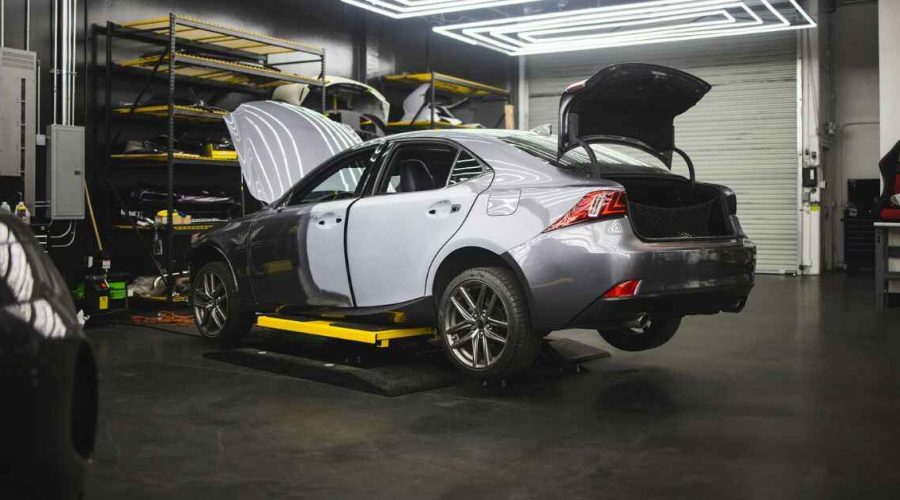
Some important tips for tire rotation:
- Keep a log of when rotations are performed
- Check tire pressure after rotation
- Inspect tires for unusual wear patterns during rotation
- Consider having alignment checked if you notice uneven wear
You should remember that proper tire maintenance not only extends tire life but also improves fuel efficiency and vehicle handling. For best results, combine regular rotations with correct tire pressure and wheel alignment.
Read the article “Why Tire Rotation and Balance is Important? Essential Tips on Tire Rotation and Balance” to learn more about tire rotation.
4. Lighting System
Proper vehicle lighting is crucial for visibility and communication with other drivers. Inspectors check:
- Headlights (both high and low beam)
- Brake lights
- Turn signals
- Emergency flashers
- License plate lights
- Parking lights
- Reverse lights
- Interior dashboard lights
All lights must function properly and be correctly aligned for optimal visibility and safety.
5. Windshield and Glass
Clear visibility is essential for safe driving. Inspectors perform detailed examinations of:
Windshield condition
Windshield damage assessment follows strict measurement criteria and location-specific guidelines. Evaluations focus on acute damage areas (maximum 3/4 inch diameter), extended crack length (maximum 6 inches), and distance from edges (minimum 3 inches), with particular attention to the driver’s primary viewing area.
Technicians must identify specific damage types including bull’s-eye breaks, star breaks, combination breaks, edge cracks, floater cracks, stress cracks, and stone damage.
The inspection considers critical zones such as the primary viewing area, secondary viewing areas, and windshield edges and corners. Repair versus replacement decisions are based on damage size limitations, location restrictions, proximity of multiple damages, and previous repair history.
The final assessment includes checking for delamination issues, including edge separation, internal clouding, UV damage, and proper frame adhesion.
Window tinting compliance:
Window tint inspection involves precise light transmission measurements across different vehicle areas, with front windshields typically requiring 70% minimum transmission, while front side windows, back side windows, and rear window requirements vary by state.
The evaluation includes checking tint specifications for visible light transmission (VLT), reflectivity limits, color restrictions, and any medical exemptions. Physical inspection encompasses examining for bubble formation, peeling, discoloration, installation quality, and edge sealing integrity.
The process concludes with verification of required documentation, including tint certification labels, medical exemption papers, and installation records.
Windshield wipers and washer function:
A thorough wiper blade inspection involves examining the rubber condition, frame integrity, size, contact pressure, wear patterns, and age, with annual replacement recommended.
The wiper arm should be checked for proper spring tension, alignment, parking position, and full sweep range. Test the wiper motor’s functionality across all speed settings, including intermittent operation, parking accuracy, and noise levels.
Finally, evaluate the washer system by checking fluid levels and freezing points, spray patterns, nozzle alignment, pump operation, line condition, and reservoir integrity.
Mirror condition and security:
A complete mirror inspection begins with checking the interior rearview mirror’s mounting security, glass condition, auto-dimming function, compass accuracy, and temperature display. The external mirrors require verification of mount security, power adjustment, heating elements, turn signal integration, blind spot monitoring, auto-fold mechanism, glass condition, and housing integrity.
Advanced features to test include camera integration, blind spot detection, power fold function, memory position accuracy, automatic dimming, and puddle light operation. Safety features should be verified, including child protection locks, anti-pinch protection, and emergency operation.
It’s important to note that state regulations typically govern acceptable windshield damage size and location, along with window tinting specifications.

6. Exhaust System
A properly functioning exhaust system prevents harmful emissions and excessive noise. Inspection includes:
- Muffler condition
- Catalytic converter presence and condition
- Exhaust pipe integrity
- Hangers and mounting hardware
- Emissions system components
- Check for leaks or excessive noise
7. Body and Frame
Structural integrity is vital for crash protection. Inspectors check:
- Frame condition and alignment
- Body panel security
- Door Functionality
- Hood and trunk latches
- Bumper attachment and condition
- Floor pan integrity
- Seat belt condition and operation
Preparing for a Vehicle Safety Inspection
Before the Inspection
Research Local Requirements
You should verify your state’s specific inspection requirements. Locate authorized inspection stations, go there, understand the cost and payment methods accepted, and check if appointments are necessary.
Perform Basic Maintenance
Please check and top off all fluids before going to the inspection. Test all your car’s lights and signals. Inspect tire condition and pressure. Clean all the windows and mirrors. Test windshield wipers and washer fluid and get ready for the inspection.
Before you go for the inspection, fix any warning lights on the dashboard, repair obvious problems like broken lights, replace worn windshield wipers, and fix any noticeable exhaust leaks in your car.
During the Inspection
Documentation Required
The required documentation for vehicle safety inspection is as follows
- Current vehicle registration
- Proof of insurance
- Previous inspection certificate (if applicable)
- Payment for inspection fees
Inspection Process
The vehicle safety inspection typically takes 30-60 minutes. You should stay on-site during the inspection if possible. Ask questions about any items that fail. Request them for detailed explanations of required repairs.
Common Reasons for Inspection Failure
Understanding common failure points can help you prepare better:
Lighting Issues
- Burnt-out bulbs
- Misaligned headlights
- Non-functioning turn signals
Brake Problems
- Worn brake pads
- Warped rotors
- Leaking brake lines
- Failed emergency brake
Tire-Related Issues
- Insufficient tread depth
- Uneven wear patterns
- Visible damage or bulges
- Improper size or type
Windshield and Glass
- Large cracks or chips
- Illegal tinting
- Non-functioning wipers
- Broken mirrors
The Benefits of Regular Safety Inspection
Enhanced Safety
Regular inspections help identify potential safety issues before they become dangerous problems. This smart and proactive approach can prevent severe road accidents and save people’s lives.
Cost Savings
Early detection of problems often results in lower repair costs. If you don’t address minor issues, it can develop into major problems and will lead to more expensive repairs.
Environmental Impact
Well-maintained vehicles produce fewer emissions and operate more efficiently, contributing to better air quality and reduced environmental impact.
Vehicle Longevity
If you perform vehicle safety inspections regularly, it can extend your vehicle’s lifespan. It will also protect your investment and ensure reliable transportation.
Tips for Maintaining Vehicle Safety Between Inspections
Vehicle care requires consistent attention to both scheduled and preventive maintenance tasks. Following manufacturer-recommended service intervals is essential, alongside prompt response to warning lights and maintaining detailed service records while performing regular visual inspections.
Owners should stay alert to vehicle performance indicators including unusual noises, handling or braking changes, fuel efficiency fluctuations, and fluid leaks.
Seasonal preparation plays a crucial role, particularly in checking battery condition before winter months and ensuring proper cooling system function before summer, helping to prevent weather-related vehicle issues.
Conclusion
Vehicle safety inspections are more than just a legal requirement – they’re an essential part of responsible vehicle ownership. Regular inspections help ensure the safety of all road users, protect your investment, and provide peace of mind. By understanding the inspection process and maintaining your vehicle properly, you can increase the likelihood of passing inspections and keep your vehicle in safe operating condition.
Remember that specific inspection requirements vary by location, so always check your local regulations. When in doubt, consult with a qualified mechanic or inspection station for guidance on preparing your vehicle for inspection.
By following these guidelines and maintaining your vehicle properly, you can help ensure the safety of yourself and others on the road while complying with legal requirements for vehicle operation.
